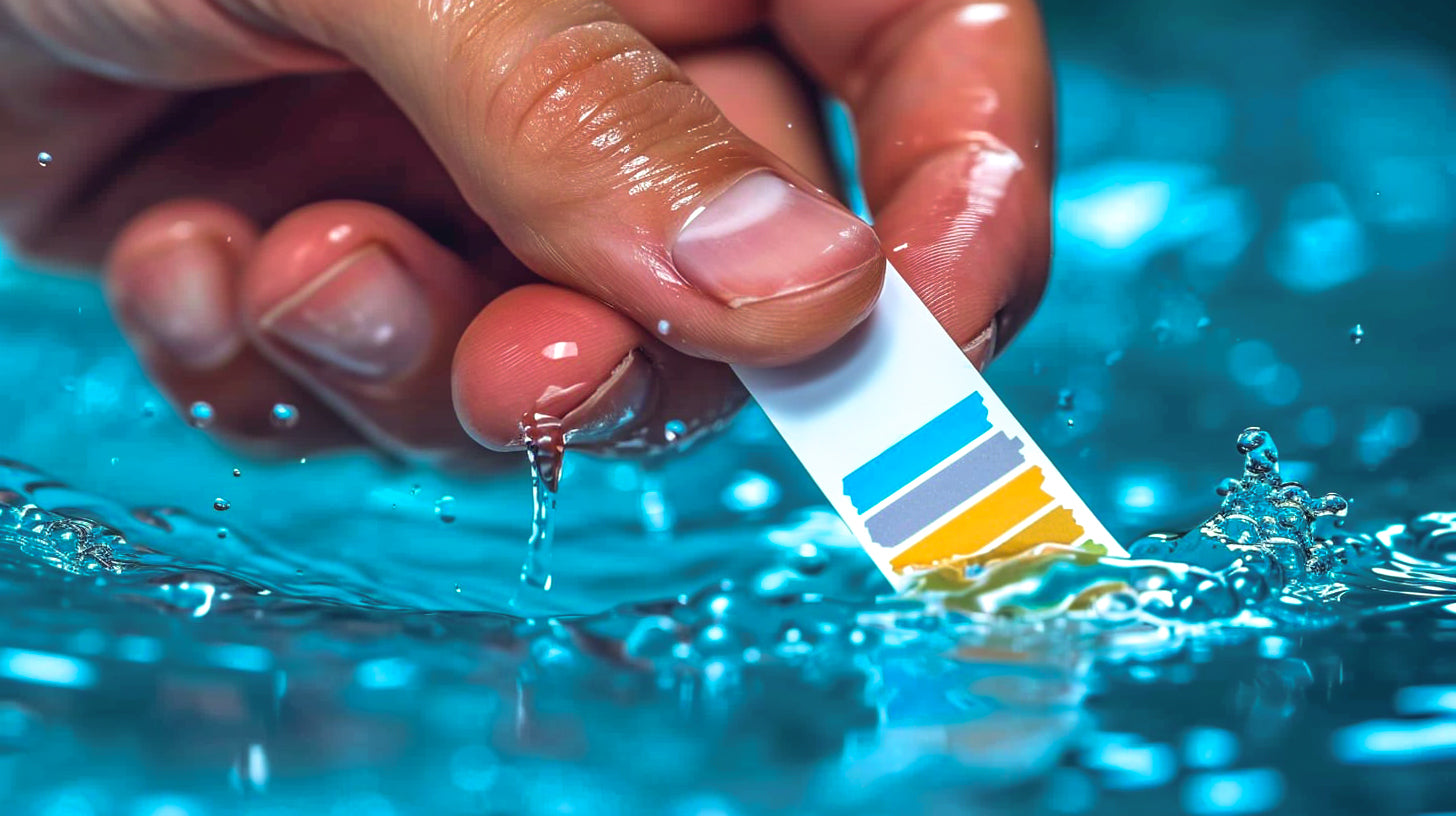
Monitoring and balancing pH levels in hot tubs is vital for our comfort and health but also for the hot tub's longevity.
What does pH level measure?
pH is a measure of how acidic or how basic water is. The pH range goes from 0 to 14, with 7 being neutral. A pH of less than 7 indicates acidity, whereas a pH of greater than 7 indicates a base. The pH of water is a very important measurement concerning the water quality of your hot tub/spa or swimming pool.
The right pH level
The ideal pH level for a hot tub and a swim spa is typically between 7.2 and 7.4.
How to measure the pH water level
How often should the pH level of the water be checked
It all depends on how often you are using the hot tub or swim spa. It's recommended to test the water at least once every 2-3 weeks, and even more frequently if the spa is used often.
What can happen if the pH levels in my water are not balanced
My water looks really clear – doesn’t that mean my pH levels are fine?
Without a pH test, there is no way of knowing. Water that looks clear can sometimes be hiding serious problems. Acidic water is capable of holding a lot of minerals in solution without the water turning cloudy. This might look good but isn’t good for you or your spa equipment.
My water looks cloudy – does this mean pH levels are unbalanced?
Cloudy water is often a sign that your pH levels are too high. This would be the first thing to check if your water is cloudy, milky or foamy. However cloudy hot tub water can also be caused by a number of other factors and these should all be checked and addressed as necessary.
Keeping your pH levels in balance
Impact of pH on Sanitizer Efficiency
Chlorine's disinfecting ability depends on water's pH and temperature. Higher pH reduces chlorine effectiveness, requiring more chlorine for the same result. Lower pH increases effectiveness but leads to acidic water problems. The goal is a balanced pH, ideally around 7.4.
Risks of Low pH in Spa Water
Having a pH level under 7.0 in your spa can lead to several issues. Acidic water can cause your sanitizer, like chlorine or bromine, to deplete rapidly, exposing you to harmful bacteria and contaminants. This acidic environment can also damage various parts of your spa.
Potential Consequences of Acidic Water:
How to increase the water pH levels
The most widely used products for raising pH levels in hot tubs, commonly known as pH increasers or pH plus, typically contain sodium bicarbonate as the active ingredient. This compound is effective in not only elevating the pH but also in increasing the total alkalinity (TA).
Risks of high pH in Spa Water
When the pH level in your spa exceeds 7.6, the water becomes basic, leading to poor sanitation. High pH can cause calcium buildup, resulting in scale on spa surfaces and cloudy water.
Effects of Basic Water:
How to reduce the water pH levels
pH decreasers, also known as pH reducers or pH minus, are dry acid products used to balance water in hot tubs, spas, or pools. Typically containing sodium bisulfate, they're pre-dissolved in warm water before adding. While effective in lowering pH, they can also significantly reduce Total Alkalinity (TA), sometimes necessitating a subsequent TA increase.
Stabilizing Water pH Levels:
Adjusting Total Alkalinity (TA) can help stabilize pH levels. TA refers to the water's capacity to neutralize acids, acting as a buffer for pH stability. In hot tubs, spas, or pools, maintaining TA is crucial for water balance. The ideal TA range is 125-150 ppm.
To adjust TA, add small amounts gradually, allowing each dose to circulate before retesting. Once TA is optimal, then adjust the pH. Often, achieving the right TA brings pH into the desired range.

Regarding transforming your backyard into a relaxing oasis, the decision between swim spas and traditional pools is not always an easy one. Both options offer their own set of benefits, but which one is better for your needs?

Combining the best aspects of a swimming pool and a hot tub, a single-zone swim spa is a fantastic choice for homeowners seeking fitness, relaxation, and fun all in one.

Turning your outdoor space into a tranquil haven doesn't have to break the bank. With the right choices and a little planning, you can enjoy the luxury of a spa in the comfort of your home.

An energy-efficient exercise pool is a modern, innovative solution designed to deliver a high-performance workout while being environmentally conscious.
